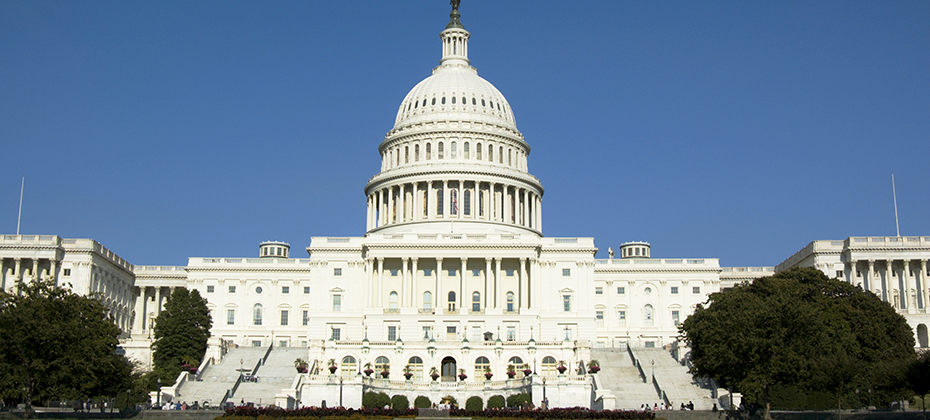Latest Posts

Prescriptive solutions: Get the Rx for your right course of action By now, everyone is familiar with the phrase “big data” and what it means. As more and more data is generated, businesses need solutions to help analyze data, determine what it means and then assist in decisioning. In the past, solutions were limited to simply describing data by creating attributes for use in decisioning. Building on that, predictive analytics experts developed models to predict behavior, whether that was a risk model for repayment, a propensity model for opening a new account or a model for other purposes. The next evolution is prescriptive solutions, which go beyond describing or predicting behaviors. Prescriptive solutions can synthesize big data, analytics, business rules and strategies into an environment that provides businesses with an optimized workflow of suggested options to reach a final decision. Be prepared — developing prescriptive solutions is not simple. In order to fully harness the value of a prescriptive solution, you must include a series of minimum capabilities: Flexibility — The solution must provide users the ability to make quick changes to strategies to adjust to market forces, allowing an organization to pivot at will to grow the business. A system that lacks agility (for instance, one that relies heavily on IT resources) will not be able to realize the full value, as its recommendations will fall behind current market needs. Expertise — Deep knowledge and a detailed understanding of complex business objectives are necessary to link overall business goals to tactical strategies and decisions made about customers. Analytics — Both descriptive and predictive analytics will play a role here. For instance, the use of a layered score approach in decisioning — what we call dimensional decisioning — can provide significant insight into a target market or customer segment. Data — It is assumed that most businesses have more data than they know what to do with. While largely true, many organizations do not have the ability to access and manage that data for use in decision-making. Data quality is only important if you can actually make full use of it. Let’s elaborate on this last point. Although not intuitive, the data you use in the decision-making process should be the limiting factor for your decisions. By that, I mean that if you get the systems, analytics and strategy components of the equation right, your limitation in making decisions should be data-driven, and not a result of another part of the decision process. If your prescriptive environment is limited by gaps in flexibility, expertise or analytic capabilities, you are not going to be able to extract maximum value from your data. With greater ability to leverage your data — what I call “prescriptive capacity” — you will have the ability to take full advantage of the data you do have. Taking big data from its source through to the execution of a decision is where prescriptive solutions are most valuable. Ultimately, for a business to lead the market and gain a competitive advantage over its competitors — those that have not been able to translate data into meaningful decisions for their business — it takes a combination of the right capabilities and a deep understanding of how to optimize the ecosystem of big data, analytics, business rules and strategies to achieve success.

Experian conducted a joint-survey that uncovered insights into the topic of conversational commerce and voice assistants. The survey audience constituted nearly 1300 smartphone users of smart voice assistant tools. The survey asked about most requested tasks and general consumer satisfaction with the voice-recognition capabilities of Amazon's Alexa relative to other smart voice assistants such as Siri and Google.

Unfortunately, identity theft can happen to anyone and has far-reaching consequences for its victims. According to the US Department of Justice (DOJ)’s most recent study, 17.6 million people in the US experience some form of identity theft each year. This includes activities such as fraudulent credit card transactions or personal information being used to open unauthorized accounts. The most obvious consequence that identity theft victims encounter is financial loss, which comes in two forms: direct and indirect. Direct financial loss refers to the amount of money stolen or misused by the identity theft offender. Indirect financial loss includes any outside costs associated with identity theft, like legal fees or overdraft charges. The DOJ’s study found that victims experienced a combined average loss of $1,343. In total, identity theft victims lost a whopping $15.4 billion in 2014. Beyond money lost, identity theft can negatively impact credit scores. While credit card companies detect a majority of credit card fraud cases, the rest can go undetected for extended periods of time. A criminal’s delinquent payments, cash loans, or even foreclosures slowly manifest into weakened credit scores. Victims often only discover the problem when they are denied for a loan or credit card application. Last year, Experian found that these types of fraud take the longest time to resolve. Identity theft doesn’t just impact victims financially; it also often takes a significant emotional toll. A survey from the Identity Theft Research Center found that 69 percent felt fear for their personal financial security, and 65 percent felt rage or anger. And, almost 40 percent reported some sleep disruption. These feelings increased over time when victims were unable to settle the issue on their own, according to the report, which can result in problem as work or school, and add stress to relationships with friends and family. Thankfully, consumers are getting smarter about the best ways to protect their information, like using monitoring services or following security best practices. How are you protecting yourself against identity theft? Learn more about our Identity Protection Services

This summer, the Consumer Financial Protection Bureau (CFPB) took a significant step toward reforming the regulatory framework for the debt collection industry. The focus is fueled in part by the large number of consumer complaints the CFPB receives about the debt collection market — roughly 35% of total complaints. Here are highlights from the recent CFPB proposal: Data quality: Collectors would be required to substantiate claims that a consumer owes a debt in order to begin collection Communication frequency: Collectors would be limited to six emails, phone calls or mailings per week, including unanswered calls and voice mails Waiting period: Reporting a person’s debt would be prohibited unless the collector has communicated directly with the consumer first The CFPB said its proposal will affect only third-party debt collectors; however, it may consider a separate set of proposals for first-party collectors. >> Insights into CFPB's latest debt collection proposal

The first six months of 2016 has shown that the total credit card limits among the subprime and deep subprime credit range totaled $6.4 billion, the highest amount reported for those groups in the last five years. Our Q2 2016 Experian-Oliver Wyman Market Intelligence Report webinar will analyze the trends impacting consumer credit decisions in the current economy. The data is from the latest Experian Market Intelligence Brief report.

Fraudsters are more sophisticated than ever. Just when you think you’ve filled the gaps, a new fraud threat emerges. Here are five strategic recommendations from Juniper Research for businesses that accept online payments: Invest in top-of-the-range fraud detection and prevention solutions Implement mobile security as soon as possible Develop a fraud prevention investment strategy Empower cross-industry collaboration to reduce online fraud effectively Fraud continues to evolve from individual rogues to organized global networks. Is your fraud prevention strategy keeping up? >>Juniper Research: Online payment fraud whitepaper

Tick-tock. Tick-tock. Lenders are just weeks away from the required Military Lending Act compliance date of Oct. 3, yet many are scrambling to find a solution. In fact, officials with CUNA and the American Bankers Association said they were still confused by the rules, and requested a six-month extension from the Department of Defense for compliance. Card holders have until Oct. 3, 2017 to comply, but others are trying to navigate what the rule means and how to introduce new practices to protect and serve military credit consumers. What are the top questions still circulating about this key piece of regulation? Here are a few we’ve been tracking, along with some responses to assist with this shift in compliance. 1. What types of accounts are covered under the Military Lending Act (MLA)? It initially applied to three narrowly-defined “consumer credit” products: Closed-end payday loans; Closed-end auto title loans; and Closed-end tax refund anticipation loans. The new rule, issued in 2015 by the Department of Defense, expands the definition of “consumer credit” covered by the regulation to more closely align with the definition of credit in the Truth in Lending Act and Regulation Z. This means MLA now covers a wide range of credit transactions. It does not apply to residential mortgages and credit secured by personal property, such as vehicle purchase loans. 2. Who are the covered borrowers under the MLA? The DMDC database identifies individuals who meet one of the following criteria: Is on active duty Regular or reserve member of the Army, Navy, Marine Corps, Air Force, or Coast Guard, serving on active duty under a call or order that does not specify a period of 30 days or less, or such a member serving on Active Guard and Reserve duty as that term is defined in 10 u.s.c. 101 (d)(6) The member’s spouse The member’s child defined in 38 USC 101(4), or An individual for whom the member provided more than one-half of the individual’s support for 180 days immediately preceding the extension of consumer credit covered by 32 C.F.R. Part 232 The flag returned from DMDC will not specifically identify the active duty military member, but it will flag if the applicant is a covered borrower. 3. How is MAPR calculated? What additional fees are included? The MAPR includes interest, fees, credit service charges, credit renewal charges, credit insurance premiums and other fees for credit-related products sold in connection with the loan. You should work with your legal/compliance teams for MLA restrictions and applicability. 4. What is the difference between the Servicemembers Civil Relief Act (SCRA) and the Military Lending Act (MLA)? Both regulations are designed to protect U.S. service members and their families, but each focus on different areas. SCRA has been around for decades and was designed to temporarily suspend judicial and administrative proceedings and transactions that may adversely affect service members during their actual military service. In fact, if a service member has a debt before he or she joined the active military service, they can have the interest rate reduced to 6 percent, upon request. If the loan is a mortgage, that rate can also be reduced for the duration the member is in the military, plus one year. Other loans are only reduced for the duration the member is on active duty. MLA, on the other hand, is focused solely on providing specific protections for active duty service members and their dependents in certain consumer credit transactions. It was introduced in 2007, but strengthened in 2015. Specifically, it limits APR to 36 percent on covered products, which was recently expanded to include closed-end payday loans, closed-end auto title loans and closed-end tax refund anticipation loans. Unlike SCRA, where the responsibility to activate these protections falls on the service member, MLA requires creditors to verify active duty status and dependents at origination. 5. Explain the difference between accessing MLA status directly versus indirectly. The Final Rule permits a creditor to use information obtained directly from the Department of Defense’s Database. Information can also be obtained from a nationwide consumer reporting agency to determine whether a consumer applicant is a covered borrower. When working with Experian, the one-stop solution will entail outputting the MLA indicator on the credit report at point of origination. We anticipate this solution will be available in fall 2016. --- Not much is known about what the punishments or fines will look like for infractions, but now is the time to start reviewing business governance and procedures that support compliance. To learn more about MLA and to access an on-demand webinar with industry experts, visit our site.

Consumers want to pay less. This is true in retail and in lending. No big surprise, right? So in order for lenders to capitalize and identify the right consumers for their respective portfolios, they need insights. Lenders want to better understand what rates consumers have. They want to know how much interest their customers pay. They want to know if consumers within their portfolio are at risk of leaving, and they want visibility into new prospects they can market to in an effort to grow. Luckily, lenders can look to trade level fields to be in the know. These inferred data fields, powered by Trended Data, allow lenders to offer products and terms that serve two purposes: First, their use in response models and offer alignment strategies drive better performance, ROI and life-time value. As noted earlier, consumers want to pay less, so if they are offered a better rate or money-saving offer, they’re more likely to respond. Second, they ultimately save consumers money in a way that benefits each consumer’s unique financial situation- overall savings on interest paid over the life of the loan, or consolidation of other debt often combined for a lower monthly payment. These trade level fields allow lenders to dig into various trends and insights surrounding consumers. For example, Experian data can identify big spenders and transactors (those who pay off their purchases every month). Research reveals these individuals love to be rewarded for how they use credit, demanding rewards, airline miles or other goodies for the spending they do. They also really like to be rewarded with higher credit lines, whether they use the increased line or not. Fail to serve these transactors in the right way and lenders could be faced with lackluster performance in the form poor response rates, booking rates, activation rates and early attrition. Thus, a little trade level insight can go a long way in helping lenders personalize products, offers and anticipate future financial needs. Knowing the profitability of a customer across all of their accounts is important, and accessing this intelligence in a seamless way is ideal. The data exists. For lenders, it’s just a matter of unlocking it, making those small, but meaningful changes and keeping a pulse on the portfolio. Together, these strategies can help lenders keep their best customers and acquire new ones that stick around longer.

Did you know that identities can shift (for better or worse) in just 30 days? To succeed in today’s multichannel, mobile environment, businesses must have a broader, more dynamic identity management strategy that includes: Identity proofing: Point-in-time verification (e.g., account opening) Authentication: Ongoing verification (e.g., account login) Identity management: Continual monitoring throughout the Customer Life Cycle Minimize your identity fraud risk, increase customer engagement and provide a satisfying customer experience by shifting to a strategy focused on identity relationship management. >>The three pillars of identity relationship management

At the end of July, the Consumer Financial Protection Bureau (CFPB) took a significant step toward reforming the regulatory framework for the debt collection and debt buying industry by announcing an outline of proposals under consideration. The proposals will now be considered by a small business review panel before the CFPB announces a proposed rule for wider industry comment. The CFPB said its proposals will affect only third-party debt collectors pursuant to the Fair Debt Collection Practices Act (FDCPA). However, the CFPB signaled it may consider a separate set of proposals for first-party collectors. The collections industry has long been a focus of the CFPB. In 2012, the bureau designated larger market participants in the debt collections marketplace and placed some of these entities under supervision. In 2013, the CFPB released an Advanced Notice of Proposed Rulemaking covering collections. The focus on debt collection is fueled in part by the large number of consumer complaints it receives about the debt collection market (roughly 35% of total complaints). Moreover, the CFPB’s proposals build upon some of the regulatory and enforcement priorities that the CFPB and Federal Trade Commission have pursued for several years around data quality, consumer communication and disclosures. Here are some of the key takeaways for third party debt collectors from the CFPB’s proposals: Address data quality: Collectors would be required to substantiate claims that a consumer owes a debt in order to begin a collection. Collectors would also be required to pass on information provided by consumers in the course of collections activity. New Validation Notice and Statement of Rights: The CFPB’s draft outline would update the information provided to consumers through the FDCPA validation notice, as well as require disclosure of a consumer statement of rights. Changes to frequency of communications: Debt collectors would be limited to six emails, phone calls or mailings per week, including unanswered calls and voicemails. After reaching the consumer, the debt collector would be allowed either one contact or three attempted contacts per week. There would also be a waiting period of 30 days before contacting the family of a debtor who has died. New disclosures on “out of statute” debt and litigation: In the outline, CFPB proposes having debt collectors provide new disclosures to consumers regarding the possibility of litigation and whether the debt is beyond the statute of limitations. Waiting period before sending collection accounts to a consumer reporting agency: Reporting a person’s debt would be prohibited under the draft outline unless the collector has first communicated directly with the consumer about the debt. The CFPB will next hear comments from a panel of small businesses in the industry, complete an analysis of how its proposals would impact small businesses, and take written comments from the public. Following those steps, the agency will issue a proposed rule for comment.

Consumer card balance transfer activity is estimated to be $35 billion to $40 billion a year. How do lenders identify these consumers before they make transfers? By using trended data. While extremely valuable, trended data is very complex and difficult to work with. For example, with 24 months of history on five fields, a single account includes 120 data points. That’s 720 data points for a consumer with six accounts on file and 72 million for a file with 100,000 consumers — not to mention the other data fields in the file. Trended data allows lenders to effectively predict where a consumer is going based on where they’ve been. And that can make all the difference when it comes to smart lending decisions. >>What is trended data?

Experian has been selected as one of the leading players in the fraud detection and prevention space in Juniper Research’s Online Payment Fraud strategies report.

As regulators continue to warn financial institutions of the looming risk posed by HELOCs reaching end of draw, many bankers are asking: Why should I be concerned? What are some proactive steps I can take now to reduce my risk? This blog addresses these questions and provides clear strategies that will keep your bank on track. Why should I be concerned? Just a quick refresher: HELOCs provide borrowers with access to untapped equity in their residences. The home is taken as collateral and these loans typically have a draw period from five to 10 years. At the end of the draw period, the loan becomes amortized and monthly payments could increase by hundreds of dollars. This payment increase could be debilitating for borrowers already facing financial hardships. The cascading affect on consumer liquidity could also impact both credit card and car loan portfolios as borrowers begin choosing what debt they will pay first. The breadth of the HELOC risk is outlined in an excerpt from a recent Experian white paper. The chart below illustrates the large volume of outstanding loans that were originated from 2005 to 2008. The majority of the loans that originated prior to 2005 are in the repayment phase (as can be seen with the lower amount of dollars outstanding). HELOCs that originated from 2005 to 2008 constitute $236 billion outstanding. This group of loans is nearing the repayment phase, and this analysis examines what will happen to these loans as they enter repayment, and what will happen to consumers’ other loans. What can you do now? The first step is to perform a portfolio review to assess the extent of your exposure. This process is a triage of sorts that will allow you to first address borrowers with higher risk profiles. This process is outlined below in this excerpt from Experian’s HELOC white paper. By segmenting the population, lenders can also identify consumers who may no longer be credit qualified. In turn, they can work to mitigate payment shock and identify opportunities to retain those with the best credit quality. For consumers with good credit but insufficient equity (blue box), lenders can work with the borrowers to extend the terms or provide payment flexibility. For consumers with good credit but sufficient equity (purple box), lenders can work with the borrowers to refinance into a new loan, providing more competitive pricing and a higher level of customer service. For consumers with good credit but insufficient equity (teal box), a loan modification and credit education program might help these borrowers realize any upcoming payment shock while minimizing credit losses. The next step is to determine how you move forward with different customers segments. Here are a couple of options: Loan Modification: This can help borrowers potentially reduce their monthly payments. Workouts and modification arrangements should be consistent with the nature of the borrower’s specific hardship and have sustainable payment requirements. Credit Education: Consumers who can improve their credit profiles have more options for refinancing and general loan approval. This equates to a win-win for both the borrower and lender. HELOCs do not have to pose a significant risk to financial institutions. By being proactive, understanding your portfolio exposure and helping borrowers adjust to payment changes, banks can continue to improve the health of their loan portfolios. Ancin Cooley is principal with Synergy Bank Consulting, a national credit risk management and strategic planning firm. Synergy provides a rangeof risk management services to financial institutions, which include loan reviews, IT audits, internal audits, and regulatory compliance reviews. As principal, Ancin manages a growing portfolio of clients throughout the United States.

Experian defines how businesses should approach Identity Relationship Management for identity and devices to enable better fraud protection through our latest perspective paper, The 3 Pillars of Identity Relationship Management: How organizations can reduce risk and increase engagement.

Ten years after homeowners took advantage of a thriving real-estate market to borrow against their homes, many are falling behind on payments, potentially leaving banks with millions of dollars in losses tied to housing. Most banks likely have homeowners with home-equity lines of credit (HELOCs) nearing end-of-draw within their portfolio, as more than $236 billion remain outstanding on loans originated between 2004 and 2007. The reality is many consumers are unprepared to repay their HELOCs. In 2014, borrowers who signed up for HELOCs in 2004 were 30 or more days late on $1.8 billion worth of outstanding balances just four months after principal payments began, reported RealtyTrac. That accounts for 4.3 percent of the balance on outstanding 2004 HELOCs. In practice, this is what an average consumer faces at end-of-draw: A borrower has $100,000 in HELOC debt. During the draw period, he makes just interest-only payments. If the interest rate is 6 percent, then the monthly payment is $500. Fast forward 10 years to the pay-down period. The borrower still has the $100,000 debt and five years to repay the loan. If the interest rate is 6 percent, then the monthly payment for principal and interest is $1,933 – nearly four times the draw payment. For many borrowers, such a massive additional monthly payment is unmanageable, leaving many with the belief that they are unable to repay the loan. The Experian study also revealed consumer behaviors in the HELOC end-of-draw universe: People delinquent on their HELOC are also more likely to be delinquent on other types of debt. If consumers are 90 days past due on their HELOC at end of draw, there is a 112 percent, 48.5 percent and 24 percent increase in delinquency on their mortgage, auto loan and credit cards, respectively People with HELOCs at end-of-draw are more likely to both close and open other HELOCs in the next 12 months That same group is also more likely to open or close a mortgage in the next 12 months. Now is the time to assess borrowers’ ability to repay their HELOC, and to give them solutions for repayment to minimize their payment stress. Identify borrowers with HELOCs nearing end of term and the loan terms to determine their potential payment stress Find opportunities to keep borrowers with the best credit quality. This could mean working with borrowers to extend the loan terms or providing payment flexibility Consider the opportunities. Consumers who have the ability to pay may also seek another HELOC as their loan comes to an end or they may shop for other credit products, such as a personal loan.